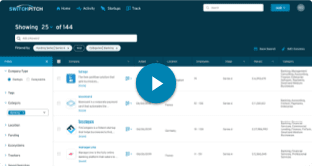
Chief Innovation Officers of 2017 are the Chief Marketing Officers of the early 2000s – limited tools, few metrics, no concrete justification of performance. Marketing software’s rise began in the mid 2000s (see infograph below); and similar to marketing, innovation software platforms are starting to fill the void. Enterprise innovation is still a fuzzy discipline; but that is changing. As strategies and tactics become standardized and accepted, tracking performance becomes more straightforward.
Marketing
Remember when Chief Marketing Officers started becoming commonplace at large companies? In the late 90s – as internet adoption took off – CMOs were a requirement for companies with an IPO in site. CMOs of the time had few measurement tools to evaluate their initiatives. Large-company CMOs I knew frequently company-hopped because they didn’t have the measurements to justify their large salaries.
The early 2000s saw the introduction of marketing tools, platforms and automation, making the CMO job much more qualifiable and measurable. Marketo, Pardot and other platforms began addresses digital marketing automation, and the industry began consolidating in the late 2000s – early 2010s.
The CMOs of 2017 are extremely metrics driven, tracking every detail of marketing efforts. They are vital to driving predictable revenue. (continues below graphic)
Innovation
Innovation cannot be automated like marketing, so innovation tools will look very different from marketing tools. Innovation tools enable aggregating, tracking, and delivering tangible connections and outcomes.
Two central pieces to most corporate innovation programs are ideation and external innovation. Ideation – aggregating ideas – takes two flavors: internal and external. Platforms like Betterific and IdeaScale focus on gathering the best ideas from internal teams or external customers or clients.
External innovation is now an accepted way of adding enterprise innovation. Startups, SBIR recipients and university technology are all sources of external innovation. Tools like SwitchPitch provide the tangible metrics to track performance and calculate ROI. Metrics include startups engaged with, deals signed, revenue generated – all providing innovation metrics. Mapping innovation ecosystems are made easier with innovation platform tools like SwitchPitch, enabling the full scope of innovation to be identified and tracked.
Chief Innovation Officers are coming of age and so are the tools they use. To become influential, innovation departments need data / ROI metrics and successful outcome data. New tools are delivering these requirements and justifying innovation budgets – the same way marketing tools justify marketing budgets.



